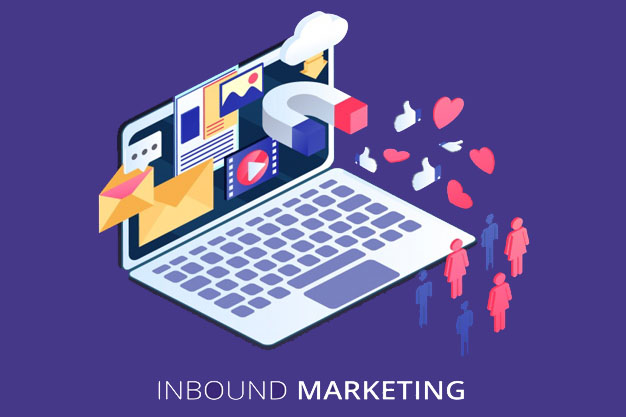What is Inbound Marketing & Outbound Marketing?
April, 2019
With all the latest buzz words in Digital Marketing such as content marketing and integrated digital marketing; Inbound marketing seems to have got a lot of traction in the past 5 years.
Marketing was just marketing and people really did not talk about Inbound and Outbound until recently. To understand what Inbound marketing is, we should first define Outbound marketing.
Marketing was just marketing and people really did not talk about Inbound and Outbound until recently. To understand what Inbound marketing is, we should first define Outbound marketing.
What is Outbound Marketing?
Outbound marketing is the traditional marketing that a lot of companies used to do (and are still doing) to market their products and services. Outbound marketing includes the following marketing activities:
- Television Ads
- Newspaper Ads
- Radio Ads
- Cold Calling to a list of prospects
- Mass Web Display Advertising
- Mass (Unsolicited) Email Marketing
- Marketing via Trade Shows
- Ads in Trade Publications and Magazines
The common thread in all the above marketing methods is that the prospective customer never asked for an interruption and communication of a sales message. Many people may wonder, is there any other way to market?
Because a lot of traditional marketers do not know and understand the latest marketing methods in the age of search engines, social media and blogs. To understand inbound marketing, we should first…
1. Unlearn and Forget about “Traditional / Outbound Marketing” then…
2. Understand how a customer makes a buying decision and buys. And…
3. Learn Inbound Marketing and execute it.
Because a lot of traditional marketers do not know and understand the latest marketing methods in the age of search engines, social media and blogs. To understand inbound marketing, we should first…
1. Unlearn and Forget about “Traditional / Outbound Marketing” then…
2. Understand how a customer makes a buying decision and buys. And…
3. Learn Inbound Marketing and execute it.
How a Customer Makes a Buying Decision
Many marketers assume that when a customer looks at a product in an ad, he will instantly feel the need to buy and will make a transaction with the business. That is rarely the case. When a customer sees an ad, he is informed and educated. Then when there is a need, he would buy it.
With the widespread use of the internet, the customer doesn’t need to keep tab on new products and services by always taking interest in the ads. Because he can get educated and informed on demand. When he needs to know about a particular product or service he will just look it up on the internet instead of learning about new products from ads and brochures every time.
Let us say that I am planning to buy a 40 inch plus flat panel TV within a few months. If there was no internet, I would have taken interest in ads of flat panel TVs whenever they showed up in TV, Newspaper, Magazines and so on. I would pay attention to the ads and slowly gather some information about the various models and brands available in the market so that I can make a good buying decision when I buy it few months later.
But now, since I have the internet, I would just look up information on the web whenever I needed to learn about it. This will make me automatically ignorant to all the ads that is showing up in different places. I don’t even subscribe to newspaper and magazines anymore! Once I have learned everything that is there to know about TVs, I would go and buy one.
So for businesses, it is more important than ever to get found when prospects are looking for them than interrupt people and stand in front of their face. If your business cannot be found when people are looking for it, you will lose the business. There is no use of telling that you are there when people do not need you.
With the widespread use of the internet, the customer doesn’t need to keep tab on new products and services by always taking interest in the ads. Because he can get educated and informed on demand. When he needs to know about a particular product or service he will just look it up on the internet instead of learning about new products from ads and brochures every time.
Let us say that I am planning to buy a 40 inch plus flat panel TV within a few months. If there was no internet, I would have taken interest in ads of flat panel TVs whenever they showed up in TV, Newspaper, Magazines and so on. I would pay attention to the ads and slowly gather some information about the various models and brands available in the market so that I can make a good buying decision when I buy it few months later.
But now, since I have the internet, I would just look up information on the web whenever I needed to learn about it. This will make me automatically ignorant to all the ads that is showing up in different places. I don’t even subscribe to newspaper and magazines anymore! Once I have learned everything that is there to know about TVs, I would go and buy one.
So for businesses, it is more important than ever to get found when prospects are looking for them than interrupt people and stand in front of their face. If your business cannot be found when people are looking for it, you will lose the business. There is no use of telling that you are there when people do not need you.
What is Inbound Marketing?
If your business can be found when people are searching for you, you are an inbound marketer. The following graph shows the rising trend of inbound marketing from Google Trends.
Inbound marketing is more efficient and does not irritate the customer. You come into the picture only when the prospect is looking for you – hence the conversion rations from prospects/lead -> buyers/customers are always higher than outbound marketing. Inbound marketing involves the following activities:
Inbound marketing is more efficient and does not irritate the customer. You come into the picture only when the prospect is looking for you – hence the conversion rations from prospects/lead -> buyers/customers are always higher than outbound marketing. Inbound marketing involves the following activities:
- Search Engine Marketing (PPC Ads)
- Blogging and getting found via Organic Search
- Contextual & Targeted Web Advertising for Audience Building
- Permission Based Email Marketing
Inbound marketing can be also used when you are introducing a new product. Even if people are not searching for a specific product, you have your own publishing platform and an audience in a specific niche. Having an audience also helps you in finding out what the market wants and then you can go ahead and create it for them. So Inbound marketing not only helps in marketing your existing products but the audience that you build acts as a focus group where you can understand their needs and come up with ideas for new products and services.
Conclusion
As the internet penetration and internet literacy grows all over the globe, people ignoring interruption ads is a trend that is only going to go up. Marketers need to rethink how to reach potential customers and sell products. There is no time better than now to start practicing Inbound marketing.
Also read: 10 Social Media Marketing Tips For Beginners



Comments
Post a Comment